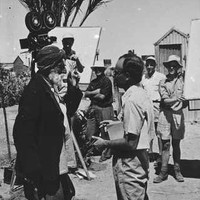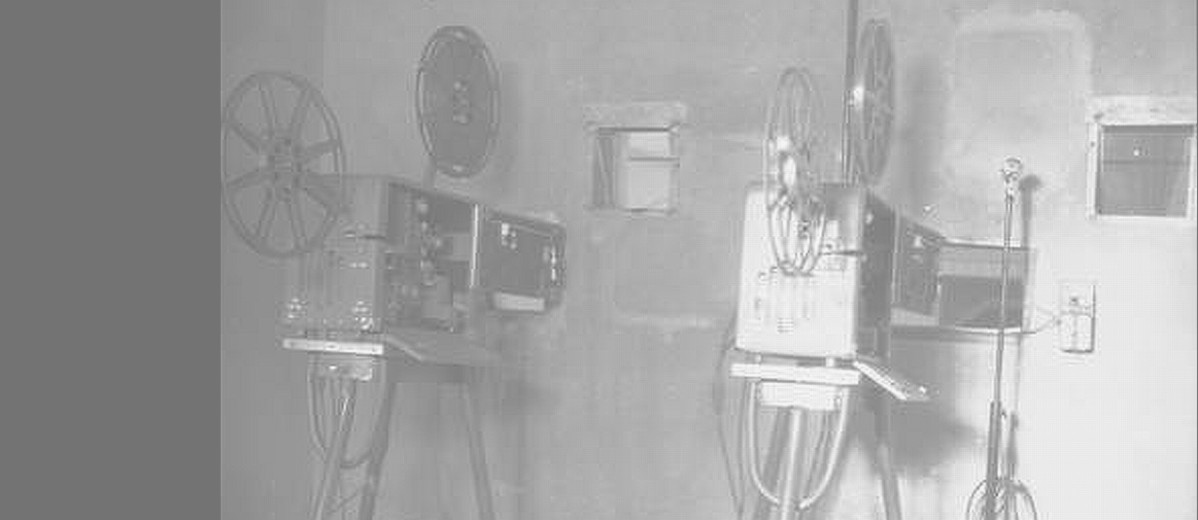Subject
ContributeIn October 1896, within one year of the Lumière brothers’ first public screening of film in Paris, the first public film screening in South Australia occurred at the Theatre Royal in Hindley Street, Adelaide. Each film, which lasted just under one minute, depicted dancers and American folk heroes. In the following year Wybert Reeve, manager of the Theatre Royal, became the colony’s first travelling ‘Picture Showman’, screening 30 short films in metropolitan and country towns. However, the novelty of moving pictures lasted just over a year, and from 1898 to 1905 only occasional ‘Picture Shows’ were screened. During this hiatus the first film to be made in South Australia, General William Booth Boards SS ‘Arcadia’ at Largs Bay (1899), was shot by Joseph Perry of the Salvation Army.
When in 1906 cinema regained the popularity of its infancy, local and interstate entrepreneurs would produce a local short such as Happenings Taken at the Adelaide Show, Adelaide’s Fire Service and Animated Adelaide and exhibit it at night in a vacant hall. Another popular genre, the bushranger film, based on the national myth of the underdog fighting the system, concerned the authorities but attracted audiences. The Adelaide Advertiser reported that The Story of the Kelly Gang, screened at the Adelaide Town Hall in 1906, ‘worked the audience up to such a pitch of excitement that . . . Ned Kelly and his followers were cheered again and again’. When a later version, The Kelly Gang, screened in 1914 the authorities acted swiftly – it became the first film banned in South Australia. The chief secretary believed that scenes depicting a bank robbery, train derailment and locking of police in their own cells were ‘demoralising to the younger generation’.
Censorship became a talking point in 1916 when Adelaide cinematographer Harry Krischock’s short film, Hunting Kangaroos by Motor Car, generated considerable public anger. Following concern about films that might offend public taste, the South Australian Advisory Board of Film Censors was established in 1917. In the same year another Krischock film, Remorse, the first feature film made in South Australia, caused further problems. Although its central theme was a venereal disease warning, it was the hint of pornography that drew the audience and admission was restricted to those 16 years of age and over.
South Australia’s first film production company of note, the Southern Cross Feature Film Company, opened with Raymond Longford’s The Woman Suffers (1918). Regarded by some as Australia’s earliest feminist film, its exhibition was approved by the state censors subject to certain scenes being eliminated. The New South Wales Chief Secretary banned the film without giving reasons. The following year, Southern Cross financed an interstate film, Longford’s The Sentimental Bloke (1919), which became the most profitable Australian feature film to date.
Only four feature films were shot in South Australia between 1918 and 1968: two English productions – Ealing Studios’ Bitter Springs (1950) and the Rank Organisation’s Robbery Under Arms (1957); and two American – Twentieth Century-Fox’s Kangaroo (1952) and Warner Brothers’ The Sundowners (1960) starring Robert Mitchum and Deborah Kerr. Half a century to the day after The Woman Suffers premiered the next South Australian feature film production, Ludwik Dutkiewicz’s Time in Summer (1968) appeared. Although the film enjoyed a prestigious screening at the 1968 Berlin Film Festival, it failed to attract commercial interest.
Attempting to promote a local film industry, in 1972 Don Dunstan’s government established the South Australian Film Corporation (SAFC). As with The Story of the Kelly Gang 70 years earlier, the first feature film produced by the corporation concerned the battler’s struggle against authority. In Sunday Too Far Away (1975), it is shearers versus graziers. Despite distribution difficulties the film made a profit and won four Australian Film Institute (AFI) Awards. The success of SAFC set a precedent for other states. The corporation’s next feature became a landmark in Australian cinema – Picnic at Hanging Rock (1975) enjoyed national and international acclaim. Other successes followed, including Storm Boy (1976), Breaker Morant (1980) and Shine (1996). The latter became a critical as well as commercial success, with Geoffrey Rush winning the American Academy Award for Best Actor. The director, Flinders University graduate Scott Hicks, was nominated as Best Director for the Academy, Golden Globe and AFI Awards. Although no longer a producer of films, SAFC’s role now includes production investment, development funding, the promotion of screen culture and educational production.
Media
Add mediaAmateur Theatrical Stills
Images

Image courtesy of the State Library of South Australia, SLSA: B 71527/1, http://images.slsa.sa.gov.au/mpcimg/71750/B71527_1.htm, Public Domain

Image courtesy of the State Library of South Australia, SLSA: B 71527/2, http://images.slsa.sa.gov.au/mpcimg/71750/B71527_2.htm, Public Domain

Image courtesy of the State Library of South Australia, SLSA: B 71527/3, http://images.slsa.sa.gov.au/mpcimg/71750/B71527_3.htm, Public Domain

Image courtesy of the State Library of South Australia, SLSA: B 71527/4, http://images.slsa.sa.gov.au/mpcimg/71750/B71527_4.htm, Public Domain
Cinema
Images

Image courtesy of the State Library of South Australia, SLSA: PRG 1605/9/86, http://images.slsa.sa.gov.au/prg/1605/9/PRG1605_9_86.htm, Public Domain

Image courtesy of the State Library of South Australia, SLSA: BRG 347/1054, http://images.slsa.sa.gov.au/arthur/01250/BRG347_1054.htm, Public Domain
People
Images

Image courtesy of the State Library of South Australia, SLSA: B 71528, http://images.slsa.sa.gov.au/mpcimg/71750/B71528.htm, Public Domain
South Australian Film Locations
Images

Image courtesy of the State Library of South Australia, SLSA: B 69530/72, http://images.slsa.sa.gov.au/mpcimg/69750/B69530_72.htm, Public Domain

Image courtesy of the State Library of South Australia, SLSA: BRG 347/1043, http://images.slsa.sa.gov.au/arthur/01250/BRG347_1043.htm, Public Domain

Image courtesy of the State Library of South Australia, SLSA: B 69766, http://images.slsa.sa.gov.au/mpcimg/70000/B69766.htm, Public Domain

Image courtesy of the State Library of South Australia, SLSA: B 50378, http://images.slsa.sa.gov.au/mpcimg/50500/B50378.htm, Public Domain


CommentAdd new comment
Quickly, it's still quiet here; be the first to have your say!